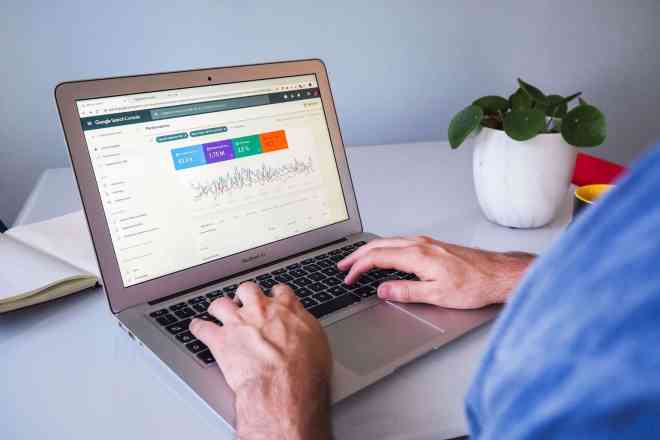Email marketing uses email lists to connect with prospective and current customers to drive sales and increase brand loyalty and awareness. It’s one of the most valuable mediums for connecting with customers and enticing them to engage with your company’s content, products, and services. Customer relationship management is a challenge outside of face-to-face interactions, and emails are a consistent way to take advantage of a system customers use reliably. So, what is the best time to send email marketing?
The best way to maximize this digital space is to find the right time to send emails. It will determine the rate at which readers open and stay inside an email’s content. Today’s discussion will explore the best times to send them to optimize budgets for email marketing and time investments in designing the perfect letter.
The Importance of Timing in Email Marketing
Many email metrics tie back to timing. The open rate is higher at specific points of the day, especially on certain days of the week. Sending emails slightly before most people’s lunch breaks will greatly ensure an open rate and longer read time than if you were to send an email at the start of a work day when nobody is checking their personal emails — they’re neck-deep in their work.
The mentality also works for weekends, as people are likely to spend time on their phones in general, but notably earlier in the day when there isn’t as much dining or nightlife impacting tech use. Customers are less likely to explore the links and “shop now” prompts at the bottom of an email if they spend time with loved ones or dance at a weekend concert.
Alongside these noteworthy facts is a concept known as send time optimization (STO). Many email marketing programs have this feature built-in or are available as an add-on. It executes sending an email at the best time based on each recipient. It leverages machine learning, data science, and artificial intelligence to gather information about your customers.
When are they most likely to respond, click, or otherwise engage? Instead of using a blanket send time, a curated approach is more likely to gain traction and convert leads than an albeit suggested high-quality send time.
Factors Influencing the Best Time to Send Emails
Though time has a lot to do with getting impactful email metrics, marketers must know the reasons behind these best send times to maximize the value of their efforts moving forward — significantly as trends change.
Let’s start by analyzing sectors. Food manufacturers have varied best send times compared to the automotive industry. The return on investment for each industry varies widely. For example, the event industry only sees a 32:1 ratio of dollars invested in returns for email marketing, whereas e-commerce sees a much higher return with a 45:1 ratio.
Target demographics have a huge impact as well. Younger generations are more likely to spend time on their phones than older, but they’re also more likely to dismiss marketing attempts because of increased awareness than their counterparts. Companies can invest in customer segmentation audience analysis to better understand who their customers are. It will determine their target audience compared to who a business may want it to be. Perhaps they’re sending emails at disconnecting times.
Geographical location and time zones also factor into proper send times. International companies will have an even greater struggle finagling these accurately, but companies must hone in on the location of their target audience before automating send times. If your customer base is cross-regional or international, you’ll want to assign different send times to various client lists for the most significant impact.
Lastly, device usage determines when people open their emails. Every decade brings exponential growth in mobile devices. If email marketing isn’t tailored and optimized for phone viewing, then businesses could be losing out on some valuable business — even if their template looks stunning on a browser.
Recommended Times and Days for Email Marketing
Here are some notable statistics concerning email engagement that’s related to the time that may surprise anyone in the game:
- For high conversion rates, send emails on Fridays.
- For high open rates, send emails on Tuesdays.
- The best hours for sending emails are around 8 pm, 2 pm, and 5 pm.
- Marketers should send emails at the beginning of the month for high conversions and clicks.
You know some base statistics for the best days and times to send emails for excellent open rates. Let’s hone in on these facts further to understand them more.
After finding out your target audience, you can use market research to your advantage. Most marketers know Tuesday is the hotspot for emails, yet weekends are a close second. Utilizing Saturday and Sunday is ideal for avoiding competition and being flooded out by other emails with potentially catchier subject lines.
However, because people tend to travel or make plans on the weekends, they may look at their inboxes less. It’s unconventional, but it is a strategy some companies may want to try. Email marketing has a consistent weekday versus weekend debate because of this fact, but generally, weekdays are still better.
Even if people are at work throughout the day, many workers check their emails during the day, on their lunch breaks, or when they get home to relax in the evening.
Personalization and A/B Testing in Email Timing
Businesses have no time to waste when testing email send times, and that’s why split testing, or A/B testing, is the best solution for uncovering these secrets. Two or more versions of an email marketing campaign can help businesses gauge how impactful even the most minor edits can be in a call-to-action template, design, or wording. Every iteration of an A/B testing initiative unfurls subscriber behavior for future personalization, and the nuances of it only come in time and attention.
Once resource companies have AI and machine learning, oversight can curate a specific dataset for your audience, discovering even the most subtle hints about the best email times. It could also help group customers into pools, allowing management to create multiple email lists of clients with interests, demographics, and qualities that are more aligned.
Manual research of this information would be costly and time-consuming — potentially impossible depending on staffing availability and scaling of the business. However, AI makes this simple.
These efforts are invaluable. Customers may not realize it, but they are tempted by more personalized emails. Marketers can personalize them in more ways than simply including their names in the email body or subject line. Are customers more likely to re-engage with a 10% off coupon or a buy-one-get-one coupon? Is the audience more responsible for bright or muted colors? These personalization options can range beyond what people perceive.
The Best Time to Send Email Marketing for High ROI
The timing of emails is crucial for business resilience and staying in touch with customer wants and needs. Combined with this knowledge, companies must understand their target audience to hone in on the times that matter most to their buyers.
Leveraging the clock will allow customers to communicate with brands for a significant ROI more reliably. Because customers are already engaging with their email, they will feel less resistance in opening their minds to marketing efforts. No company’s best time is the same — perhaps further research could get it down to the minute. But, everyone can experiment week-to-week to find the best formula for golden email marketing.
About The Author
Eleanor Hecks is the Editor-in-Chief of Designerly Magazine, an online publication dedicated to providing in-depth content from the design and marketing industries. When she's not designing or writing code, you can find her re-reading the Harry Potter series, burning calories at a local Zumba class, or hanging out with her dogs, Bear and Lucy.


